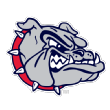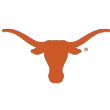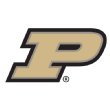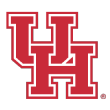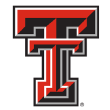New teams, big movers grace Way-Too-Early Top 25 college basketball rankings for 2021-22

The wildest, most unpredictable offseason in recent college basketball history has finally slowed to a crawl (possible SEC and Big 12 shakeups notwithstanding) and we can really start digging in on what teams will look like during the 2021-22 season. The transfer portal has closed for the most part, the NBA draft withdrawal deadline passed a few weeks ago and there are very few remaining decisions that have the potential to change the top-25 landscape.
One of those is Jalen Duren, who is expected to reclassify into the 2021 class and play college basketball in the fall. His three college options include Memphis, Miami and Kentucky -- and his addition would potentially vault the Tigers and Hurricanes into the top 25 and maybe the Wildcats into the national championship discussion. Another potential decision-maker isEmoni Bates, who could also opt to reclassify into 2021 and play in college next season, but his short-term future is more unclear.
Since our last update, which came before both the July 7 early-entry withdrawal deadline and the July 1 deadline for players to enter the transfer portal and be eligible next season, most of the risers and fallers came in the Big Ten and Big 12. Kofi Cockburn's return to Illinois pushes the Fighting Illini well into the top 25, while Ohio State and Maryland fell after NBA draft decisions. Meanwhile, Oklahoma State and Texas Tech leapt into the top-25 conversation after landing key transfers and Texas jumped into the top five with the addition of top transfer Marcus Carr.
1. Gonzaga Bulldogs
Previous: 1
It shouldn't be a surprise, but Gonzaga is going to be as battle-tested as any team in the country during the non-conference portion of the season. Over the last couple weeks, the Zags officially added UCLA and Alabama to their 2021-22 schedule -- joining a slate that already included games against Texas, Duke, Texas Tech and Washington. Five of those teams are in the updated Way-Too-Early Top 25, including two in the top five and three in the top 10. Gonzaga is going to be preseason No. 1, but the Zags will have to earn it if they want to hold onto that spot entering WCC play.
Adding to Gonzaga's preseason hype was Chet Holmgren's performance at the FIBA U19 World Cup earlier this month. The potential No. 1 pick in the 2022 NBA draft earned MVP honors after averaging 11.9 points, 6.1 rebounds, 3.3 assists and 2.7 blocks, while shooting 62% from the field and 53.8% from 3-point range. Holmgren is arguably the best player entering college basketball, while Drew Timme might be the best player returning to college basketball. That should be a fun duo.
Projected starting lineup:
Nolan Hickman(No. 22 in ESPN 100)
Andrew Nembhard (9.1 PPG)
Hunter Sallis (No. 14 in ESPN 100)
Chet Holmgren (No. 1 in ESPN 100)
Drew Timme (19.0 PPG)
2. Kansas Jayhawks
Previous:4
Ochai Agbaji was one of the truly 50-50 stay-or-go NBA draft decisions all offseason, even looking like he was leaning toward keeping his name in the draft down the stretch. But shortly before the deadline, he opted to return to Lawrence -- as did Jalen Wilson and Remy Martin. With all three of them solidly in the fold, Kansas moves up a couple spots and might be Gonzaga's biggest competition for preseason No. 1.
Martin is going to be the X-factor for Bill Self's team. Kansas had some issues with playmaking and point-guard play last season, but Marcus Garrett performed admirably in that role. Martin doesn't have the size or defensive ability of Garrett, but he's a significantly better playmaker who brings a different dimension to Kansas' backcourt. Given all the experienced talent around him, though, Martin likely won't have nearly the usage rate he had at Arizona State -- and that could be a difficult adjustment early on. But Martin has tremendous speed, takes care of the ball, draws foul at a high rate and can make shots from 3. He'll improve the Jayhawks.
Projected starting lineup:
Remy Martin (19.1 PPG at Arizona State)
Christian Braun (9.8 PPG)
Ochai Agbaji (14.2 PPG)
Jalen Wilson (12.1 PPG)
David McCormack (13.4 PPG, 6.1 RPG)
3. UCLA Bruins
Previous: 3
Johnny Juzang brought his stay-or-go decision down to the wire, but he opted to return to Westwood for another run at the Final Four. Juzang was the biggest breakout star of the NCAA tournament, averaging 22.8 points and shooting 50.9% from the field in leading UCLA on a Cinderella run to the Final Four before falling at the buzzer to Gonzaga. Juzang's 137 points were the second-highest NCAA tournament total in UCLA history. But he was still only projected as a second-round pick in the NBA draft and will look to improve his stock next season.
Chris Smith decided to leave for the professional ranks, but he tore his left ACL in the middle of last season and missed the final 24 games -- meaning Mick Cronin returns every player from the Bruins' NCAA tournament run and only added to it during the offseason. Top-10 recruit and projected lottery pick Peyton Watson could start immediately on the wing, while Rutgers graduate transfer Myles Johnson gives UCLA physicality and defense on the interior.
Projected starting lineup:
Tyger Campbell (10.2 PPG)
Johnny Juzang (15.5 PPG)
Peyton Watson (No. 10 in ESPN 100)
Jaime Jaquez Jr. (12.1 PPG)
Cody Riley (9.8 PPG)
4. Villanova Wildcats
Previous: 2
Villanova drops a couple spots after Kansas and UCLA saw some key returnees return near the NBA draft deadline. Both teams just feel a bit more complete than Villanova right now, with fewer question marks in terms of personnel. The Wildcats, as always, are loaded on the perimeter -- but the issue could be down low where they need to replace co-Big East Player of the Year Jeremiah Robinson-Earl. One of the more complete frontcourt players in the league, Robinson-Earl was dominant at times down the stretch of the season, especially after Collin Gillespie's injury. Eric Dixon showed flashes as a freshman, including a 14-point effort against Hartford in December, but played a minimal role in the second half of the campaign. Incoming freshman Nnanna Njoku could be a factor early in his college career; he has a college-ready build and can contribute immediately as a rebounder and finisher on the offensive end. If one of those two players steps up down low, Villanova will be right in the title hunt.
Projected starting lineup:
Collin Gillespie (14.0 PPG, 4.6 RPG)
Justin Moore (12.9 PPG)
Caleb Daniels (9.6 PPG)
Jermaine Samuels (12.0 PPG)
Eric Dixon (3.0 PPG)
5. Texas Longhorns
Previous: 10
No new head coach -- or any coach, period -- brought in more talent than Chris Beard did this offseason. The Longhorns landed clearly the best transfer class of any program in the country, signing three of ESPN's top five transfers and six of the top 31. The most recent addition, Minnesota guard Marcus Carr, vaults Texas into the national championship conversation. How Beard doles out minutes and keeps everyone happy will be the key. There are six transfers who started consistently at high-major programs, plus two returning starters and a top-50 freshmen. Having too much talent is preferred to having too little talent, but it's going to be a challenge for Beard. The other thing keeping Texas at No. 5 instead of No. 1 or No. 2 is the fact that the majority of the newcomers -- Carr, Timmy Allen, Tre Mitchell, Dylan Disu -- were highly productive for not-so-successful teams. All of them will likely see their numbers dip for the betterment of the team; Beard will need everyone to buy in.
Projected starting lineup:
Marcus Carr (19.4 PPG at Minnesota)
Courtney Ramey (12.2 PPG)
Andrew Jones (14.6 PPG)
Timmy Allen (17.2 PPG at Utah)
Tre Mitchell (18.8 PPG at UMass)
6. Purdue Boilermakers
Previous:6
We've gotten an early look at some of the Boilermakers this offseason, with Jaden Ivey, Caleb Furst and Zach Edey all playing in the FIBA U19 World Cup in Latvia earlier this month. Ivey did nothing to slow the buzz of a breakout sophomore season, opening the tournament with 21 points and three 3-pointers against Turkey and going for 16 points and four rebounds on 6-for-10 shooting against France in the final. Overall, he shot 63.9% from 2-point range and averaged 12.3 points. Furst averaged 7.1 points and 4.1 rebounds, including two 14-point efforts against Mali and Korea. Edey was the biggest eye-opener of the trio, dominating on the interior and helping lead Canada to a third-place finish. The 7-foot-4 rising sophomore averaged 15.1 points, 14.1 rebounds and 2.3 blocks, shooting 56% from the field. Edey had six double-doubles in seven games, and was outstanding in tournament play. He had 24 points and 15 boards against Spain, followed by 16 points and 16 rebounds in a semifinal loss to the United States.
Projected starting lineup:
Eric Hunter Jr., (8.5 PPG)
Jaden Ivey (11.1 PPG)
Sasha Stefanovic (9.3 PPG)
Mason Gillis (5.2 PPG)
Trevion Williams (15.5 PPG, 9.1 RPG)
7. Michigan Wolverines
Previous:7
Hunter Dickinson ran his decision down to the final days before announcing he was returning to Ann Arbor for his sophomore season. With Dickinson -- and DeVante' Jones -- officially back in the fold, the Wolverines are undoubtedly a Big Ten championship and Final Four contender once again. Dickinson was crucial. While he was never projected as a first-round pick, his impressive freshman season put him in position to potentially be a one-and-done player. Now that he's returning, he's likely a preseason All-American and will fight with Kofi Cockburn, Trevion Williams, E.J. Liddell and Trayce Jackson-Davis in a frontcourt-heavy race for Big Ten Player of the Year honors. Dickinson was one of the most dominant freshmen in the country, sprinting out of the gates by averaging 17.5 points and 7.9 rebounds over his first 11 games, shooting 70.9% from the field. He tallied six double-doubles and had five 20-point efforts against Big Ten opposition. He'll take a step forward during his second year in college, too.
Projected starting lineup:
DeVante' Jones (19.3 PPG at Coastal Carolina)
Eli Brooks (9.5 PPG)
Caleb Houstan (No. 7 in ESPN 100)
Brandon Johns Jr., (4.9 PPG)
Hunter Dickinson (14.1 PPG, 7.4 RPG)
8. Kentucky Wildcats
Previous:9
Given the Wildcats' aggressiveness in rebuilding their roster this offseason, it shouldn't come as a surprise they were involved in some key decisions during the month of July. On the plus side, Davion Mintz opted to return to Lexington for his extra year of eligibility. Mintz started 21 games last season and shot nearly 38% from 3-point range; his combination of experience and ability to play either backcourt spot will earn him plenty of minutes even despite the additions at guard. He was terrific down the stretch of the season, averaging 16.7 points, 4.8 assists and shooting 47.1% from 3 in the final six games. Up front, Kentucky didn't land Kofi Cockburn, who entered the transfer portal before opting to return to Champaign. The Wildcats were heavily linked early in his transfer recruitment, although the two sides went separate ways a few days before a decision. They're also still in the hunt for elite 2022 prospect Jalen Duren, who is expected to reclassify into the 2021 class. Much of the buzz of late is centered around Memphis and Miami, however.
Projected starting lineup:
Sahvir Wheeler (14.0 PPG, 7.4 APG at Georgia)
TyTy Washington (No. 12 in ESPN 100)
Kellan Grady (17.1 PPG at Davidson)
Keion Brooks Jr., (10.3 PPG, 6.8 RPG)
Oscar Tshiebwe (8.5 PPG, 7.8 RPG at West Virginia)
9. Baylor Bears
Previous: 8
The biggest news coming out of Baylor over the last month or so was Arizona transfer James Akinjo being granted an NCAA waiver to suit up immediately next season for the Bears. It was up in the air when Akinjo committed to Baylor, given that he already transferred from Georgetown to Arizona and was therefore not eligible for the one-time transfer waiver the NCAA put forth earlier this offseason. But the NCAA granted Akinjo a waiver and now Scott Drew has his playmaking point guard to help replace projected first-round picks Davion Mitchell and Jared Butler. Akinjo had his best season in college for the Wildcats last season, averaging a career-high in points (15.6) and assists (5.4), a career-low in turnovers (2.3), and shooting a career-best 40.8% from 3-point range. He's an ultra-competitive player who will immediately become one of the more experienced players in Baylor's lineup. The key for Akinjo will be assimilating himself quickly into a group that returns several key players from a national championship team.
Projected starting lineup:
James Akinjo (15.6 PPG at Arizona)
Adam Flagler (9.0 PPG)
Kendall Brown (No. 15 in ESPN 100)
Matthew Mayer (8.2 PPG)
Jonathan Tchamwa Tchatchoua (6.3 PPG, 5.0 RPG)
10. Duke Blue Devils
Previous: 12
I've grown a little higher on Duke as the offseason has worn on, given the potential breakout season coming from Mark Williams, the potential No. 1 pick capability of Paolo Banchero and the strong spring buzz surrounding a healthy A.J. Griffin. There's also a bit more versatility and depth than a season ago, and the "Mike Krzyzewski farewell tour" narrative has to be a factor. Let's look at Griffin for a minute. He was a former top-10 recruit who missed about a year and a half of action due to a knee injury and his high school season getting canceled during the pandemic. By all accounts, however, he made a statement during the Iverson Classic workouts and is currently pegged at No. 7 overall in ESPN's early 2022 mock drafts. If Griffin is back to his old form, he's going to make an impact at both ends of the floor. He's a versatile defender with length and athleticism, and he can also make shots out to the perimeter. There aren't too many more talented frontcourt trios than Griffin, Banchero and Williams.
Projected starting lineup:
Jeremy Roach (8.7 PPG)
Wendell Moore Jr., (9.7 PPG)
A.J. Griffin (No. 26 in ESPN 100)
Paolo Banchero (No. 3 in ESPN 100)
Mark Williams (7.1 PPG, 4.5 RPG)
11. Oregon Ducks
Previous:11
While Dana Altman has had success with ultra-athletic frontcourt players like Jordan Bell and Kenny Wooten filling in at the center spot, he's also done well by playing multiple undersized forwards together in the frontcourt -- and despite the addition of top-10 prospect Nate Bittle and the return of N'Faly Dante and Franck Kepnang, I think Oregon's best lineup next season might feature a pair of forwards playing in the frontcourt together in Eric Williams Jr.and Syracuse transfer Quincy Guerrier. Eugene Omoruyi was fantastic last season for the Ducks, and Guerrier should step right in for him. Guerrier is a physical forward who earned all-ACC honors last season after averaging 13.7 points and 8.4 rebounds. He does most of his damage inside the arc and is a terrific offensive rebounder and underrated shot-blocker. Altman has plenty of options, though. Dante is an excellent shot-blocker and rebounder, while Kepnang flashed in the NCAA tournament. Bittle is a supremely skilled face-up center who can really shoot it.
Projected starting lineup:
Will Richardson (11.3 PPG)
De'Vion Harmon (12.9 PPG at Oklahoma)
Jacob Young (14.1 PPG at Rutgers)
Eric Williams Jr. (10.0 PPG)
Quincy Guerrier (13.7 PPG at Syracuse)
12. Illinois Fighting Illini
Previous: Unranked
The biggest rise in the rankings comes from Champaign, as All-American center Kofi Cockburn not only withdrew from the NBA draft, but then fended off interest from Kentucky and Florida State to withdraw from the transfer portal and return to the Fighting Illini. Cockburn is the most physically dominant player in college basketball and will be a preseason first-team All-American and maybe even the favorite for Big Ten Player of the Year. With Cockburn back in the fold, let's take stock of Brad Underwood's roster. All-American Ayo Dosunmu is gone, but highlight-reel point guard Andre Curbelo will take his spot in the starting lineup. Da'Monte Williams and Jacob Grandison split time last season, but both could start after the transfer of Adam Miller. Double-figure scorer Trent Frazier is also back. Illinois brings in a pair of ESPN 100 freshmen, as well as high-major transfers Omar Payne (3.8 points at Florida) and Alfonso Plummer (13.6 points at Utah). This team might be deeper and more versatile than last season's 1-seed.
Projected starting lineup:
Andre Curbelo (9.1 PPG)
Trent Frazier (10.2 PPG)
Da'Monte Williams (5.5 PPG)
Jacob Grandison (4.6 PPG)
Kofi Cockburn (17.7 PPG)
13. Arkansas Razorbacks
Previous: 13
Eric Musselman has had years of success with transfers at both Nevada and Arkansas, but next season might be determined by the progress of rising sophomore Davonte "Devo" Davis. Davis had an impressive debut campaign in Fayetteville, a season that started slow but was jump-started when he went for 20 points, seven rebounds and six assists in a January win over Georgia. Prior to that, Davis had never played more than 20 minutes in a single game. Davis contributed over the course of SEC play, but the real reason for optimism next season is the way he performed in the NCAA tournament. He stood out defensively for his work on Texas Tech's Mac McClung, and also helped limit Oral Roberts' Max Abmas for stretches. On the offensive end, he had some of his best performances of the season, averaging 14.3 points, 6.5 rebounds and 2.0 assists, scoring in double-figures in all four games. Can Davis become even an occasional threat from the perimeter? The 6-foot-3 guard made just two 3-pointers all season, making zero in his final 20 games.
Projected starting lineup:
Chris Lykes (15.5 PPG at Miami)
Devo Davis (8.5 PPG)
Au'diese Toney (14.4 PPG at Pittsburgh)
Stanley Umude (21.6 PPG at South Dakota)
Jaylin Williams (3.7 PPG, 4.7 RPG)
14. Houston Cougars
Previous: 17
I might have underrated Houston a bit during the first few months of the offseason. The Cougars do lose All-American Quentin Grimes and do-it-all guard DeJon Jarreau, in addition to all-league forward Justin Gorham, but they might have upgraded on a couple of those departures. Texas Tech transfer Kyler Edwards should be one of the best guards in the AAC after averaging double-figures in each of the last two seasons for the Red Raiders. He shot nearly 42% from 3-point range last season and also dished out around three assists the last two seasons. In Gorham's place will be Fabian White, who averaged 9.3 points and 5.5 rebounds in 2019-20 before missing most of last season with an ACL injury. Kelvin Sampson also added UConn transfer Josh Carlton to provide interior depth; he's one of the best offensive rebounders in the country, which fits the Cougars perfectly. The loss of Grimes will hurt, but the Cougars are going to be elite defensively and on the glass, and there will still be enough scoring on the roster.
Projected starting lineup:
Marcus Sasser (13.5 PPG)
Tramon Mark (8.0 PPG)
Kyler Edwards (10.1 PPG at Texas Tech)
Fabian White Jr., (6.3 PPG)
Reggie Chaney (4.6 PPG)
15. Alabama Crimson Tide
Previous: 16
Shortly before the last update, it became clear Joshua Primowas going to keep his name in the NBA draft so we dropped the Crimson Tide six spots in advance. But Nate Oats' group slides back up a notch after convincing Jaden Shackelford to return to Tuscaloosa instead of transferring. Shackelford entered the transfer portal in late June and after considering the likes of Texas Tech, Ohio State and Oklahoma, Shackelford went back to Alabama. The Crimson Tide now have one of the best offensive perimeter groups in the country, with Shackelford and explosive incoming freshman J.D. Davison flanking shifty playmaker Jahvon Quinerly. Former five-star recruit Nimari Burnett will also fight for extended minutes right off the bat after transferring in from Texas Tech. What Oats gets from his frontcourt will determine whether this team can win another SEC championship. Noah Gurley is a versatile transfer from Furman, while freshman center Charles Bediako is an excellent defensive player. Can they acclimate quickly?
Projected starting lineup:
Jahvon Quinerly (12.9 PPG, 3.2 APG)
J.D. Davison (No. 13 in ESPN 100)
Jaden Shackelford (14.0 PPG)
Noah Gurley (15.4 PPG at Furman)
Charles Bediako (No. 33 in ESPN 100)
16. North Carolina Tar Heels
Previous:20
For most of the offseason, the Tar Heels looked poised to change their system from the two-big lineups Roy Williams preferred to a more modern look likely to include Oklahoma transfer Brady Manek, an excellent 3-point shooter, as a stretch four next to Armando Bacot. But Carolina went out in early July and landed Marquette transfer Dawson Garcia, a former McDonald's All-American who was one of the best freshmen in the Big East last season. Does the addition of the 6-foot-11 Garcia force Hubert Davis to go back to a bigger lineup next season? Perhaps. What it certainly does is give Davis options up front. Bacot is an anchor on the block, someone who will look to build on the 16.7 points and 9.5 rebounds he averaged during the final six games of the season. While Garcia isn't quite as prolific a 3-point shooter as Manek, he's skilled, can make plays away from the rim -- and did shoot nearly 36% from 3 on 2.7 attempts per game. On paper, Carolina might have similar size down low to the Williams era, but they'll be more versatile.
Projected starting lineup:
Caleb Love (10.5 PPG, 3.6 APG)
R.J. Davis (8.4 PPG)
Kerwin Walton (8.2 PPG)
Dawson Garcia (13.0 PPG at Marquette)
Armando Bacot (12.3 PPG, 7.8 RPG)
17. Tennessee Volunteers
Previous: 18
Tennessee will be as talented as anyone in the SEC next season, but the Volunteers' ceiling will likely be determined by their two newcomers in the backcourt: elite point guard Kennedy Chandler and Auburn transfer Justin Powell. Santiago Vescovi has started 42 of his 46 games in a Tennessee uniform, but he's not as dynamic a playmaker as Chandler or as consistent of a 3-point shooter as Powell. Rick Barnes could opt to go with Vescovi alongside those two in a three-guard lineup, and he'll likely battle Victor Bailey Jr. for that spot. But Chandler and Powell hold the keys to an improved Tennessee offense -- which would mean an improved Tennessee team, after the Volunteers finished ninth in the SEC in offensive efficiency and 11th in 3-point shooting percentage. Chandler loves to attack off the bounce and put pressure on the defense, and isn't afraid to push the tempo and make plays in the open floor. Powell shot 44.2% from 3-point range through 10 games -- including back-to-back games against South Alabama and Memphis where he averaged 26.0 points and shot 11-for-15 from behind the arc.
Projected starting lineup:
Kennedy Chandler (No. 8 in ESPN 100)
Justin Powell (11.7 PPG at Auburn)
Victor Bailey Jr. (10.9 PPG)
Josiah-Jordan James (8.0 PPG)
John Fulkerson (9.5 PPG)
18. Ohio State Buckeyes
Previous:5
In the last update to the rankings, we alluded to the potential departure of Duane Washington Jr.Over the last couple of months, it was clear he was more likely than E.J. Liddell to keep his name in the NBA draft, and the Buckeyes exploring guard options in the transfer portal in late June and early July cemented that idea. Washington leaving really hurts the Buckeyes on the offensive end, though. He was capable of huge scoring games, including his 32-point effort in the Big Ten tournament title game against Illinois. Without Washington, Chris Holtmann could look at part-time starter Justin Ahrens, who is the best shooter on the team, or incoming top-50 freshman Malaki Branham. Ohio State did give itself another option when it landed Louisiana transfer Cedric Russell, a first-team all-Sun Belt guard who averaged 17.2 points and shot 40% from 3-point range last season. Russell had 26 points in the season opener against Baylor and also had 25 points against Louisiana Tech in December.
Projected starting lineup:
Jamari Wheeler (6.8 PPG at Penn State)
Justin Ahrens (5.7 PPG)
Justice Sueing (10.7 PPG)
E.J. Liddell (16.2 PPG)
Kyle Young (8.6 PPG)
19. Maryland Terrapins
Previous: 14
Aaron Wiggins was another player we mentioned in the last update as one who could parlay his impressive G League Elite Camp and NBA combine performances into a legitimate chance to get picked in the NBA draft. That doesn't make Wiggins' departure hurt any less, however. Without him in the fold, it likely means Hakim Hart will return to the lineup after starting 19 games last season. He was a key cog down the stretch in Big Ten play, and also scored 32 points and hit five 3-pointers in an early-December game against St. Peter's. Top-50 incoming freshman Julian Reese could be another option who will be counted on early in the season, while Maryland has also been linked to available Cincinnati transfer Keith Williams. Mark Turgeon did get some good news near the withdrawal deadline, when Eric Ayala expectedly decided to return to College Park. Even with the additions of Fatts Russell (Rhode Island) and Qudus Wahab (Georgetown), Ayala will likely be the go-to-guy next season after hitting 20-plus points four times in the final 10 games of the campaign.
Projected starting lineup:
Fatts Russell (14.7 PPG at Rhode Island)
Eric Ayala (15.1 PPG)
Hakim Hart (7.1 PPG)
Donta Scott (11.0 PPG)
Qudus Wahab (12.7 PPG, 8.2 RPG at Georgetown)
20. Florida State Seminoles
Previous: 19
While Florida State's newcomers are getting most of the offseason attention in Tallahassee -- and deservedly so, given that the Seminoles are bringing in three top-60 freshmen and a high-level transfer in Houston guard Caleb Mills -- don't forget about Anthony Polite. One NBA executive mentioned to ESPN recently he's a name to watch in 2022 and could be poised for a breakout season. Polite, a 6-foot-6 Switzerland native, has steadily improved during his four seasons with the Seminoles, taking a big step forward last season, starting 16 games and averaging 10.1 points and 4.5 rebounds. Polite is a versatile piece who can play on the wing in a bigger lineup or even play a small-ball 4 alongside Matt Cleveland in a smaller lineup. He shot 43.6% from 3-point range last season and is the team's best shooter. The Seminoles might be a bit unproven down low, especially after losing out on transfer candidates Kofi Cockburn and Moussa Cisse, but Leonard Hamilton has an array of options on the perimeter.
Projected starting lineup:
Caleb Mills (9.8 PPG at Houston)
Jalen Warley (No. 59 in ESPN 100)
Matt Cleveland (No. 28 in ESPN 100)
Anthony Polite (10.1 PPG)
Malik Osborne (5.9 PPG, 4.5 RPG)
21. Auburn Tigers
Previous: 21
There's an abundance of talent on Bruce Pearl's roster this season, but he will have to figure out how to mix and match all the pieces to make it work. The biggest key will likely be at the point guard spot, although early returns on Eastern Kentucky transfer Wendell GreenJr. have been positive. The Detroit native averaged 15.8 points and 5.0 assists as a freshman, but he was at his best late in the season, putting up 24.0 points, 4.0 rebounds and 4.2 assists on 51.9% 3-point shooting during the final five games of the season. Green's distribution ability will be important, given all the scoring options he will have alongside him in the starting lineup. One of those players, Jabari Smith, is flying a bit under the radar with the attention being given to fellow freshmen Chet Holmgren and Paolo Banchero, but Smith is a future top-10 pick. And by all accounts, he's looked the part since arriving on campus. If Pearl can make everything click, there won't be many teams in the country that can rival the Tigers' talent.
Projected starting lineup:
Wendell Green Jr. (15.8 PPG, 5.0 APG at Eastern Kentucky)
K.D. Johnson (13.5 PPG at Georgia)
Allen Flanigan (14.3 PPG)
Jabari Smith (No. 5 in ESPN 100)
Walker Kessler (4.4 PPG at North Carolina)
22. Oklahoma State Cowboys
Previous: Unranked
July was always going to be a good month for Mike Boynton and the Cowboys, as they will undoubtedly be producing the No. 1 pick in the NBA draft come Thursday night when Cade Cunningham gets selected first overall. But they got the month off to a strong start by adding Memphis transfer Moussa Cisse, a former five-star prospect and one of the best shot-blockers in the country. While Cisse didn't have a standout freshman season, he was terrific on the defensive end and raises Oklahoma State's ceiling due to his ability at that end of the floor. Boynton can play Cisse alongside Kalib Boone down low and have one of the most dominant defensive duos in the country, or he could bring Cisse off the bench as a game-changer down low. If Boynton opts to go that route and play smaller, he has a number of options as well. Bryce Williams started 19 games last season and played very well during Oklahoma State's 8-1 stretch in February and March, while Rondel Walker had a 6-1 record as a starter. The Cowboys also welcome former five-star guard and McDonald's All-American Bryce Thompson as a transfer from Kansas.
Projected starting lineup:
Isaac Likekele (9.1 PPG)
Avery Anderson III (12.2 PPG)
Matthew-Alexander Moncrieffe (9.0 PPG)
Kalib Boone (9.4 PPG)
Moussa Cisse (6.6 PPG at Memphis)
23. Virginia Tech Hokies
Previous: 15
Virginia Tech took one of the biggest falls in the rankings this month after Tyrece Radford's decision to enter the transfer portal shortly before the deadline. Radford had his issues in Blacksburg, including an arrest and resulting four-game suspension last season. But he started all but three games he was available for the last two seasons, and brought some much-needed toughness and physicality to the team. Radford averaged double-figures each of the last two seasons, and finished last season putting up 16.0 points on 58.5% shooting in the final four games. Mike Young will likely turn to Hunter Cattoor to fill his spot in the starting lineup after providing high-level shooting off the bench the last two seasons. Cattoor is a completely different player than Radford, who did most of his damage inside the arc, but he will give the Hokies three elite shooters on the perimeter. Cattoor shot 43.3% from 3-point range last season and upped that to 44.6% in ACC play; he had a stretch of six double-figure scoring outings in an eight-game period near the start of conference play.
Projected starting lineup:
Storm Murphy (17.8 PPG, 4.3 APG at Wofford)
Hunter Cattoor (8.5 PPG)
Nahiem Alleyne (11.1 PPG)
Justyn Mutts (9.5 PPG, 6.4 RPG)
Keve Aluma (15.2 PPG, 7.9 RPG)
24. Texas Tech Red Raiders
Previous: Unranked
It's been a rocky offseason for Texas Tech, which saw seven players enter the transfer portal in the days following the end of the season -- and also bade farewell to coach Chris Beard, who led the Red Raiders to tremendous heights during his five seasons in Lubbock. Nearly four months later, Texas Tech finds itself back in the top 25 after an impressive rebuild via the portal. Oral Roberts transfer Kevin Obanor -- one of the breakout stars of the NCAA tournament -- vaulted Tech into the top 25, but he's not the only impact newcomer. Davion Warren (Hampton), Bryson Williams (Hampton), Adonis Arms (Winthrop) and Sardaar Calhoun (Florida State) will all be counted on for immediate impacts. The return of Terrence Shannon Jr., who had entered the NBA draft, also gives the Red Raiders a proven Big 12 scorer who could be ready to take the next step. The keys for Tech will be whether Mark Adams can continue the program's dominance on the defensive end, and point guard play. Warren can play that role, as could returnee Clarence Nadolny.
Projected starting lineup:
Davion Warren (21.2 PPG at Hampton)
Kevin McCullar (10.4 PPG)
Terrence Shannon Jr. (12.9 PPG)
Kevin Obanor (18.7 PPG at Oral Roberts)
Marcus Santos-Silva (8.3 PPG)
25. Virginia Cavaliers
Previous: 23
This is purely a bet on Tony Bennett. On paper, the Cavaliers don't have enough proven top-25-caliber talent or highly-touted newcomers. But they do have Bennett -- and what should be a pretty solid core of four players. Kihei Clark is the top returnee. He's an experienced leader at the point guard spot and one of the best defensive players in the ACC. Reece Beekman is the only other returnee with extended time under his belt; he started 20 games as a freshman and showed promise as a defender and playmaker. Then there's incoming transfers Jayden Gardner, one of the most productive players in the country at East Carolina, and Armaan Franklin, a terrific outside shooter who averaged double-figures at Indiana. So who might step up and help Virginia live up to this billing? Kadin Shedrick had two double-figure scoring games in the first five games of last season before missing time with an illness, while Francisco Caffaro has flashed in a couple games over the last two years. Carson McCorkle barely played last season, but he was a four-star recruit coming out of high school.
Projected starting lineup:
Kihei Clark (9.5 PPG, 4.5 APG)
Reece Beekman (4.7 PPG)
Armaan Franklin (11.4 PPG at Indiana)
Jayden Gardner (18.3 PPG at East Carolina)
Francisco Caffaro (1.2 PPG)
Next in line:
St. Bonaventure Bonnies (previous: No. 22)
Michigan State Spartans (previous: No. 24)
Colorado State Rams (previous: No. 25)
Belmont Bruins (previous: Next in line)
UConn Huskies (previous: Next in line)
Dropped out: St. Bonaventure (No. 22), Michigan State (No. 24), Colorado State (No. 25), West Virginia (Next in line), Mississippi State (Next in line), Xavier (Next in line)
Related Video
Related Topics
- SPORTS
- ESPN
- OREGON DUCKS
- KANSAS JAYHAWKS
- VIRGINIA TECH-HOKIES
- DUKE BLUE-DEVILS
- GONZAGA BULLDOGS
- ILLINOIS FIGHTING-ILLINI
- FLORIDA STATE-SEMINOLES
- TEXAS LONGHORNS
- AUBURN TIGERS
- VIRGINIA CAVALIERS
- TEXAS TECH-RED-RAIDERS
- COLORADO STATE-RAMS
- ST BONAVENTURE-BONNIES
- UCONN HUSKIES
- BAYLOR BEARS
- HOUSTON COUGARS
- OHIO STATE-BUCKEYES
- PURDUE BOILERMAKERS
- VILLANOVA WILDCATS
- MARYLAND TERRAPINS
- BELMONT BRUINS
- OKLAHOMA STATE-COWBOYS
- KENTUCKY WILDCATS
- LIST
- MENS COLLEGE-BASKETBALL
- NORTH CAROLINA-TAR-HEELS
- ARKANSAS RAZORBACKS
- MICHIGAN STATE-SPARTANS
- ALABAMA CRIMSON-TIDE
- TENNESSEE VOLUNTEERS
- UCLA BRUINS
- MICHIGAN WOLVERINES


